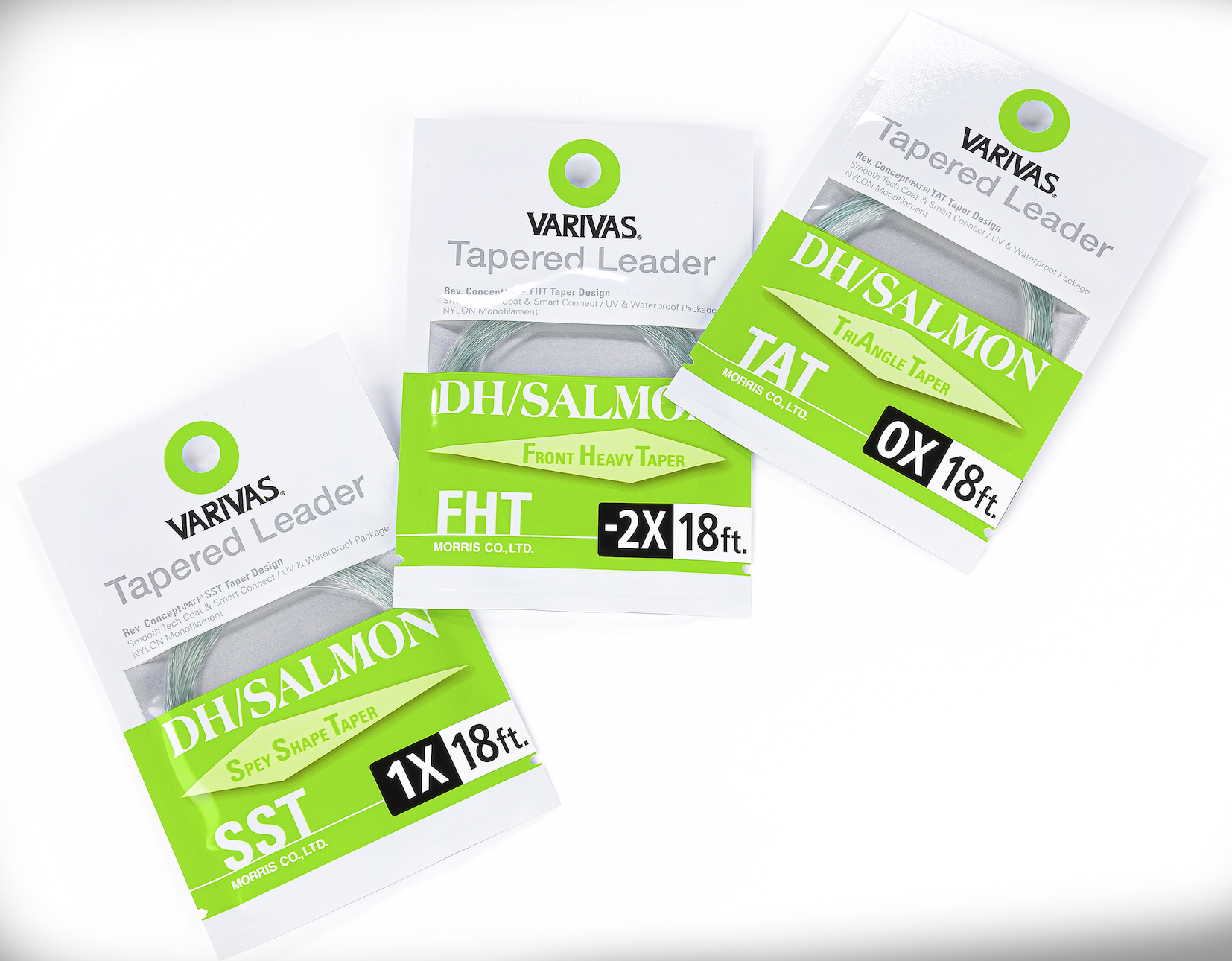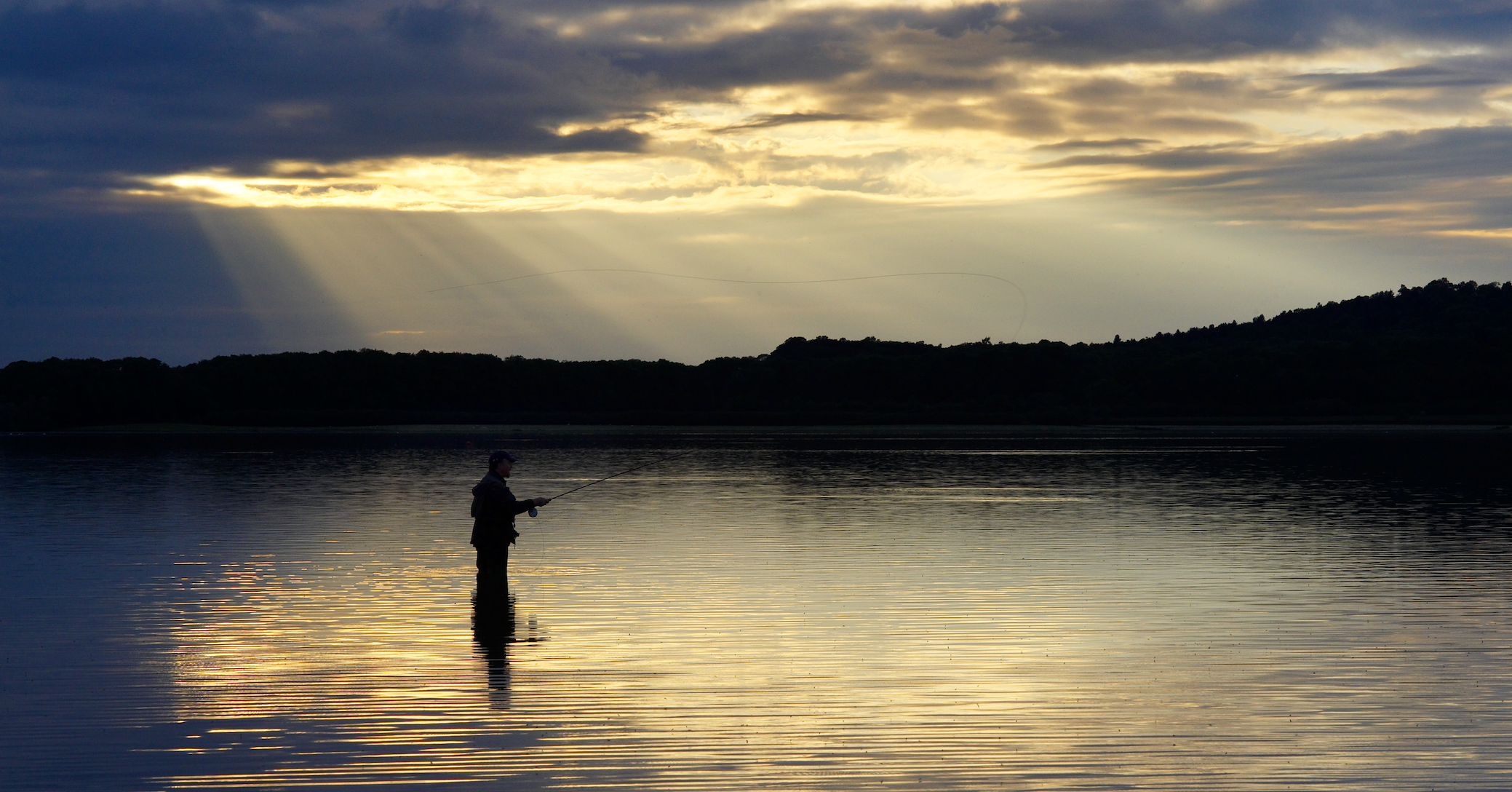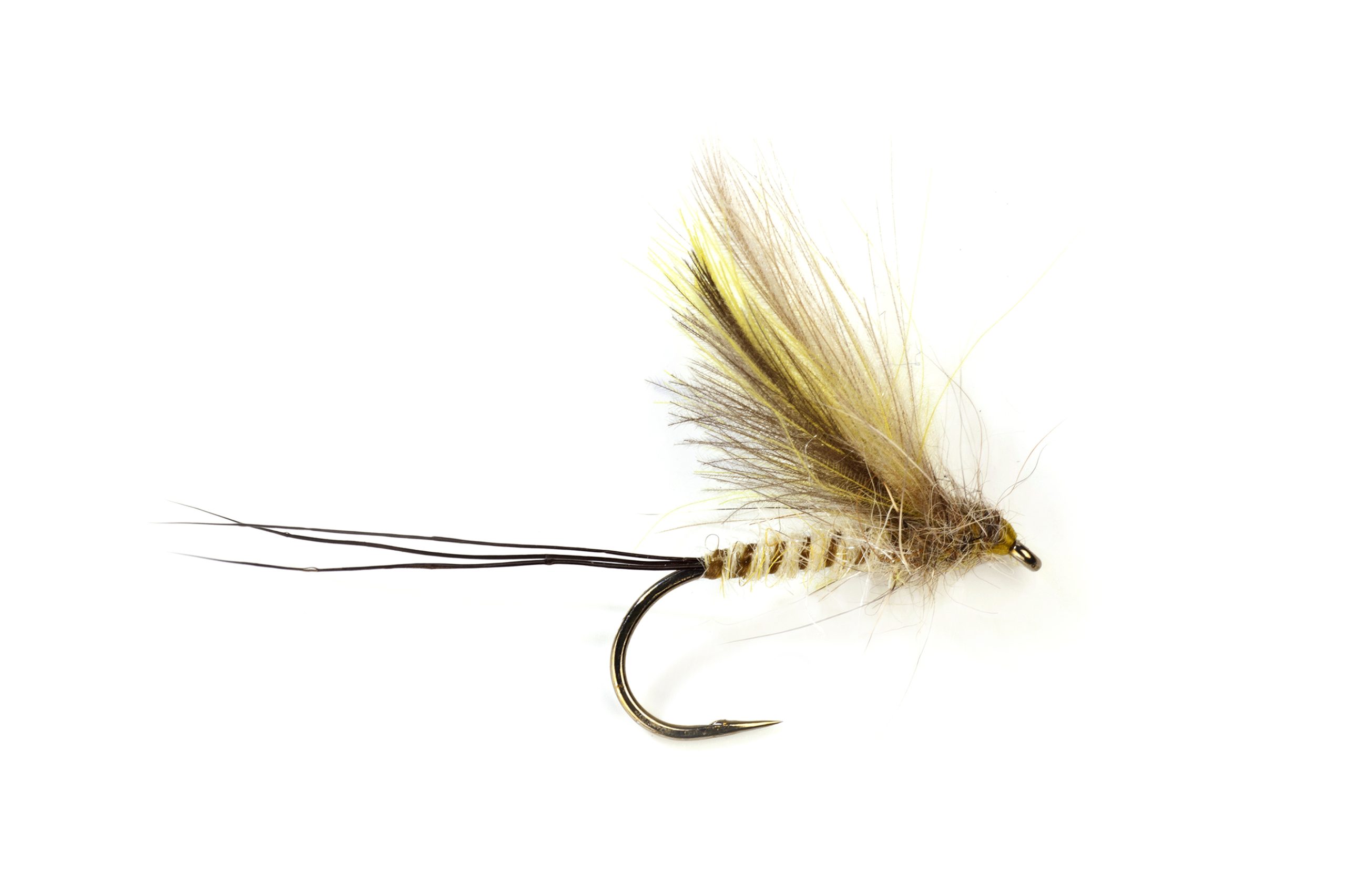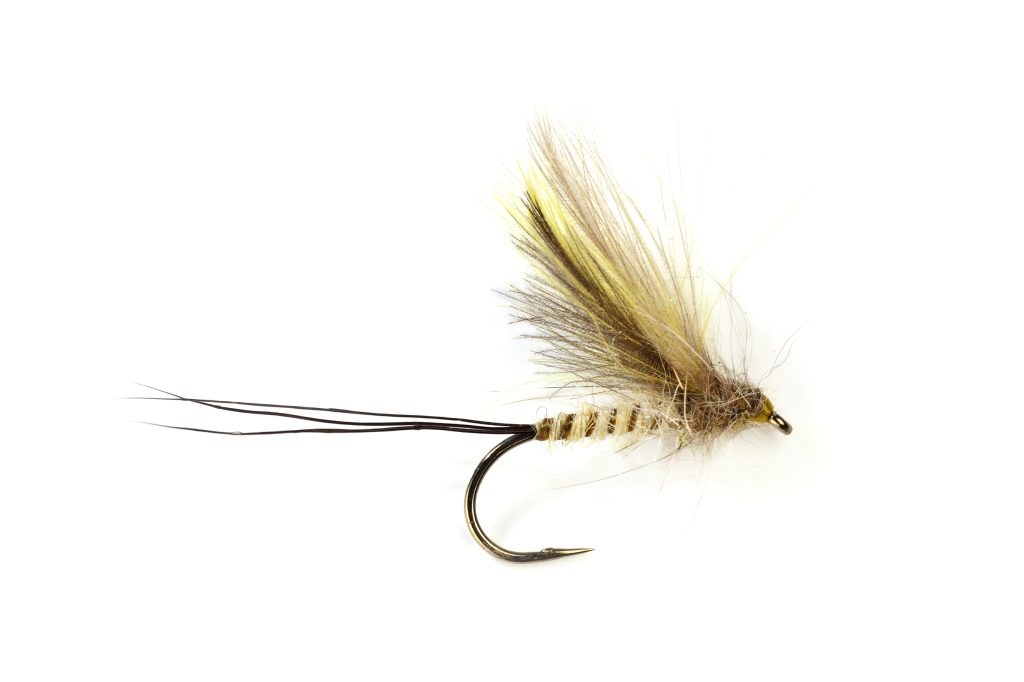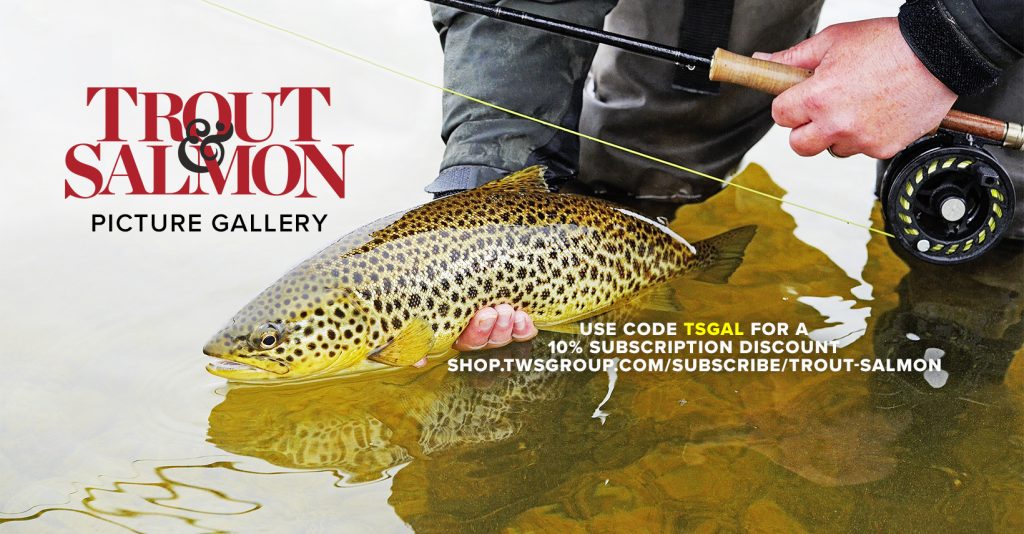Fly tying
News
HOW TO TIE THE ALLY’S SHRIMP SALMON FLY
Would you like to appear on our site? We offer sponsored articles and advertising to put you in front of our readers. Find out more.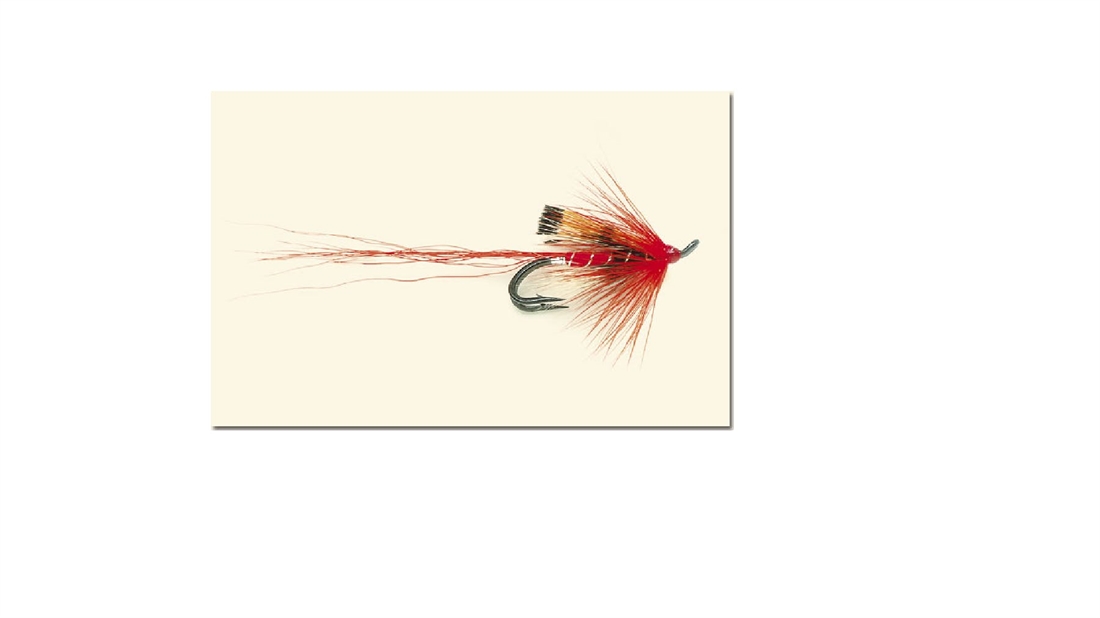
On the August 1988 issue of Trout and Salmon Alastair Gowans revealed his latest creation — the Ally’s Shrimp — to the salmon fishing world.
Little did he realise, then, what an impact it would have.
In his article Alastair wrote: “It is worth a try any time from late spring to late autumn, and fish have been taken on it from the Dee, Tay, Tummel, Tweed and Esks.” Since then the Ally’s Shrimp has probably taken fish from every salmon producing river in the world.
Alastair Gowans’s intention was to produce an illusion of something “shrimpy” and semitranslucent, like the creatures he had caught while on board a trawler fishing the Minch.
As with any fly (particularly a salmon fly) it is a fact that the more people who fish a particular pattern, the greater the number of fish that will be caught on it, but the Ally’s Shrimp does seem to be something special, and few fishers would admit to never having fished the fly at one time or another.
The original shown here has spawned a host of colour variants, perhaps the most successful among them the Yellow Ally’s Shrimp.
Hook To suit conditions Thread Red
Tail Small bunch of hot-orange bucktail
Rib Oval silver tinsel Body Rear half red
floss; front half black floss Underwing
Natural grey squirrel tail Overwing
Golden-pheasant tippets Beard hackle
Natural grey squirrel tail Hackle Long
hot-orange cock Head Red varnish
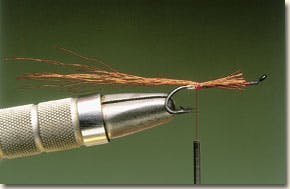
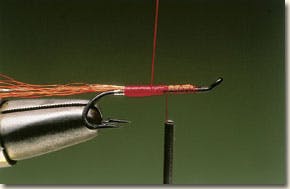
- Fix the hook in the vice and run the thread down to the bend. Wind on three or four turns of fine oval silver tinsel to form a tag. At the front of the tag catch in a long, thin bunch of orange bucktail.
- Wind the tying thread over the waste ends of the bucktail to form an even base for the body. Halfway along the shank catch in four inches of red floss.
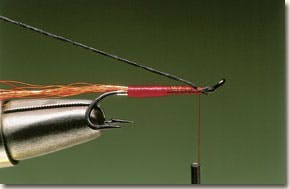
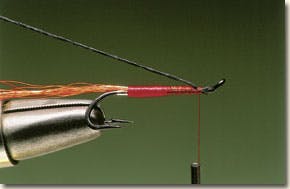
- Wind the floss in close turns down to the base of the tail. Wind it back again to its catching-in point, forming a double layer that helps create a smooth effect.
- Secure the loose end of the floss and remove the excess. Carry the thread up to a point just short of the eye and catch in a length of black floss.
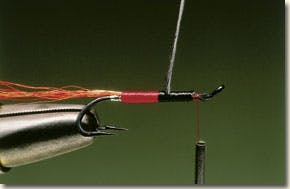
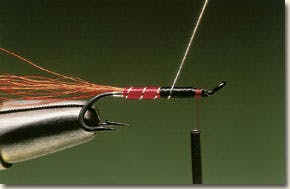
- Wind the black floss down the shank until it meets the red floss body section. Take it back to its catching-in point to form the front body section.
- Secure the loose end of the black floss with thread and remove the excess. Take hold of the silver tinsel and wind it over the body in six evenly spaced turns.
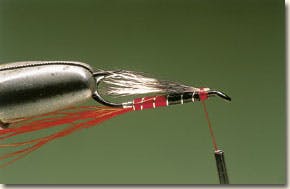
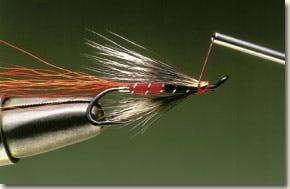
- Rotate the jaws so that the hook is inverted and catch in a slim bunch of grey squirrel tail to form a beard hackle.
- Return the hook to its original position and catch in a second bunch of squirrel tail to form a wing.
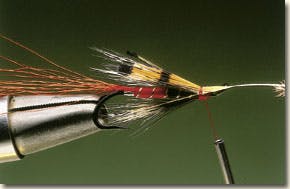
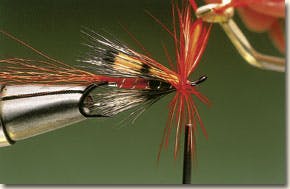
- Take a medium-sized golden-pheasant tippet feather and remove the fibres from the base. Catch in the feather at the front of the wing so that it sits flat.
- Secure the GP feather in place and remove the waste ends. Now catch in a soft-fibred orange cock hackle by its base and wind on three or four full turns.
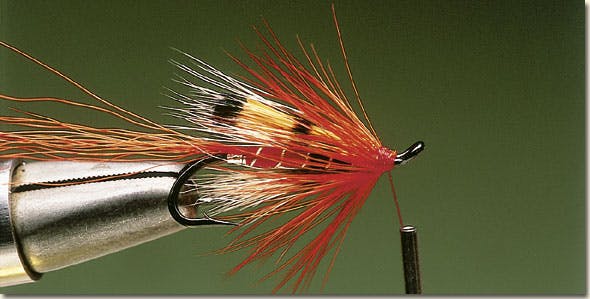
- Secure the loose end of the hackle and remove the excess. Stroke the hackle fibres back over the body and position with thread. Build a neat head and cast off with a whip finish.
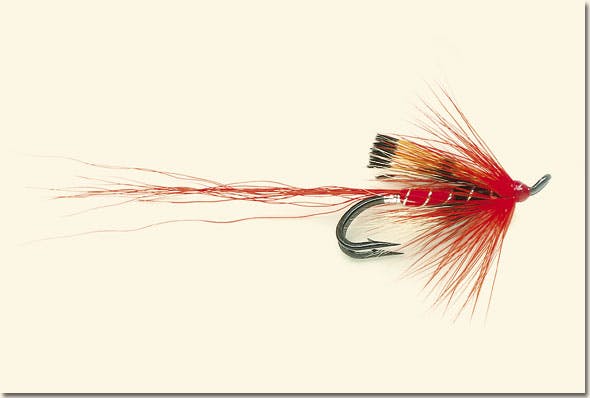
WHERE, WHEN & HOW TO FISH
W H E R E
The Ally’s Shrimp is such a versatile fly that it can be fished with confidence on rivers worldwide.
W H E N
Perhaps at its most effective after the water has warmed up in late spring and early summer.
H O W
Fish it on floating, sink-tip and intermediate lines. In autumn’s colder water, an Ally’s Shrimp tied on a Waddington and fished on a full sinking line can be deadly.
T Y I N G T I P
Make sure the tail is about twice the length of the hook shank.
Related articles
Fly tying
Tie the CDC Mayfly Dun
Try this low-riding Mayfly Dun for fussy trout that refuse a high-riding dry-fly.
By Time Well Spent
Manage Consent
To provide the best experiences, we use technologies like cookies to store and/or access device information. Consenting to these technologies will allow us to process data such as browsing behavior or unique IDs on this site. Not consenting or withdrawing consent, may adversely affect certain features and functions.
Functional Always active
The technical storage or access is strictly necessary for the legitimate purpose of enabling the use of a specific service explicitly requested by the subscriber or user, or for the sole purpose of carrying out the transmission of a communication over an electronic communications network.
Preferences
The technical storage or access is necessary for the legitimate purpose of storing preferences that are not requested by the subscriber or user.
Statistics
The technical storage or access that is used exclusively for statistical purposes.
The technical storage or access that is used exclusively for anonymous statistical purposes. Without a subpoena, voluntary compliance on the part of your Internet Service Provider, or additional records from a third party, information stored or retrieved for this purpose alone cannot usually be used to identify you.
Marketing
The technical storage or access is required to create user profiles to send advertising, or to track the user on a website or across several websites for similar marketing purposes.

